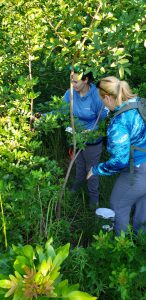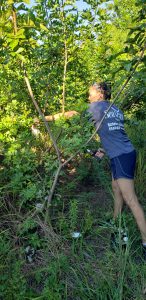
Mechanical and chemical methods are typically used to control the spread of Brazilian peppertree. Florida’s Noxious Weed List states that “it is unlawful to introduce, multiply, possess, move or release any noxious weed” without a permit (FDACS 2019). Furthermore, the Brazilian peppertree was adopted into the Hernando County Noxious Plant Control Ordinance of 2015. Unfortunately, birds and mammals often feed on the fruit of the Brazilian peppertree and disperse the seeds, allowing for widespread colonization.
Biological control is another method explored to combat Brazilian peppertrees. Scientists have studied Brazilian preppertree thrips (Psuedophilothrips ichini) for over 20 years as a possible biological control agent. These insects are host-specific and feast on Brazilian peppertrees, causing severe plant growth, height, and limited fruit production. 
UF/IFAS partnered with Hernando County to release approved Brazilian peppertree thrips to reduce the need for other costly control techniques. The thrips were reared by Dr. Carey Minteer at the UF/IFAS Indian River Research and Education Center and released at a test site in Hernando Beach. Agents Brittany Scharf (UF/IFAS Hernando County) and Dr. Stacy Strickland (UF/IFAS Osceola County) are integrating drone imagery to monitor the project’s progress. UF Masters student Emily Le Falchier will assess the project’s environmental and biological components to help further entomological innovations. The release site is part of Hernando County’s Environmentally Sensitive Lands program under Carla Burrmann.
Learn more about Brazilian peppertree thrips and the invasive Brazilian peppertree.
 4
4
